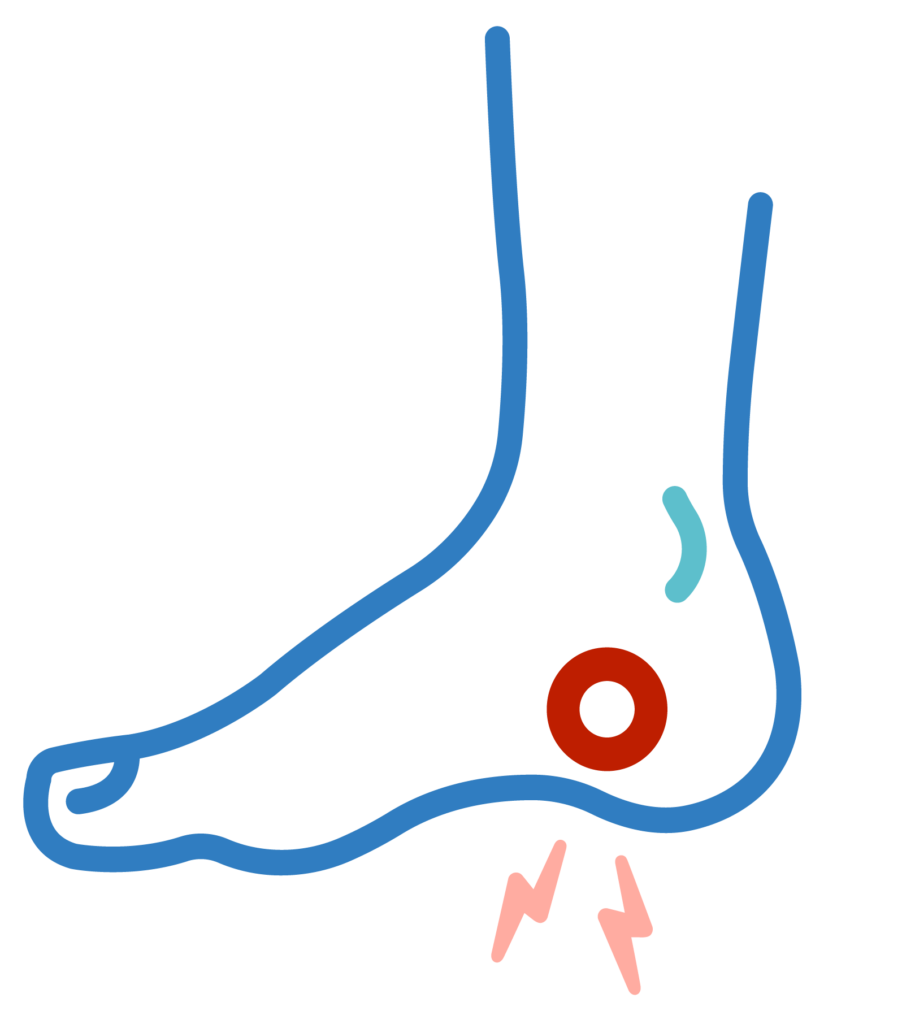Blisters

Prevention
Footwear
Make sure you have well-fitting shoes and appropriate socks. Synthetic materials or wool for socks are recommended. Avoid cotton. Both shoes and socks should be tested during training. As the saying goes “On race day don’t wear shoes that are too new or socks that are too old.”
Foot care
Keep bulky callouses to a minimum using a foot file/scraper in the months leading up to your race, keep toenails trimmed in squared off fashion. Reference Fixing your Feet?
Pre-race
Consider powder or lube if you have trained with this. There is some data to suggest that these products may eventually increase your likelihood of blisters due to disrupting natural protection.
Pre-tape
If you are prone to blisters in a particular part of your foot applying a single layer of paper tape in that area may help prevent blister formation.
Treatment
Blisters
For blisters consider having a small kit in your race bag (paper tape, small bit of padding, alcohol wipes, etc.) and do a quick field dressing. Then have a more comprehensive blister kit for drop bags/crew for a definitive dressing with various tapes (paper, leukotape, Elastikon,etc.) hydrocolloid gel products (Second Skin, Compeed), cleaning materials, adhesives like benzoin, scissors, needles, scalpels.
Hot spots
You will feel an irritation or area that feels hot. Common areas include, heel, toes, ball of feet. On examination you may see a small area of redness but skin is intact and not blistered. Clean the foot, dry the foot, apply a single layer of thin paper tape or similar. You can also apply a small amount of adhesive, just to that area prior to taping, to make the tape stick such as benzoin. Also see if there is something in the shoe or sock that may be contributing to the blister.
Intact blister
Intact blister with or without fluid—take the time to do this right, your goal is to dress the blister once that will last for the rest of the race. If done properly these methods have stayed intact for races lasting 6 days:
Without fluid—we call this the basic blister dressing. First, similar to hotspot, clean the foot, dry the foot, apply a single layer of thin paper tape or similar. You can also apply a small amount of adhesive such as benzoin, just to that area prior to taping, to make the tape stick. Then, after you apply the paper tape, apply a thin padded material (Elastikon tape works well, thin foam products or similar) over the paper tape layer.
With fluid—in a race you will need to drain the fluid for comfort. After a race or in daily life consider leaving the fluid as this will promote healing.
Skin intact–to drain the fluid you can use a disinfected needle (the thicker the better), a scalpel or knife or even a safety pin from your bib if needed. Again, ensure these are clean using an alcohol wipe or similar. Use gravity to your advantage poking the hole or slit on the area of the blister that will easily be able to drain toward the ground. If possible keep the skin over the area and don’t remove the skin. Then use the same basic blister dressing. For these you can also use an adhesive hydrocolloid gel product such as Compeed as the initial layer rather than paper tape.
Skin disrupted—if the skin has peeled off the blister you can remove the crumpled up or peeled off skin. Consider a small pair of scissors in your aid station bag to help with this. Clean the area with an alcohol wipe or similar. Apply a non adhesive hydrocolloid product such as Second Skin and then the basic blister dressing
After the Race
Remove all dressings, clean the area well with soap and water, consider a nice pair of sandals for comfort and monitor for any signs of infection such as increased redness and warmth, foul drainage or fevers and seek medical care for these. You will likely need to apply a dressing for daily life after the race as well unless you are just sitting around and eating ice cream.
